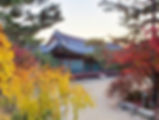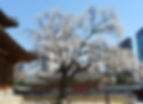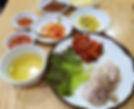
Deoksugung Palace 덕수궁
9:00-21:00
Last admission: 1 hr before closing.
Closed on Mondays.
-
Changing of the Royal Guards Ceremony -11:00, 14:00, 15:30.
-
Ceremony Route - Daehanmun Gate at Deoksugung Palace → Seoul Plaza → Cheonggye Plaza → Gwangtonggyo Bridge → Bosingak Bell.
-
Free Guided Tours (1 hr) - English (Tue-Sun) - 10:45, 13:30 | Chinese (Tue-Sun) - 10:00, 14:30 | No tours on holidays.
-
Bosingak Bell Ringing Ceremony takes place at 12:00.
Adult (age 19-64): 1,000 won, Child (age 7-18): 500 won, Child (under 7) / Senior (above 64) / Wearing Hanbok (traditional korean clothes) / Culture day (last Wednesdays of every month): Free
Combination Ticket - Adult: 10,000 won, child: 5,000 won to 4 palaces (Changdeokgung with Secret Garden, Changgyeonggung, Deoksugung, Gyeongbokgung) and Jongmyo Shrine. 3 months validity.
-
City Hall Station (line 1/2, exit 1/2/12). 2 mins walk.
Deoksugung Palace is the smallest of the five palaces in Seoul.
It is the final residence of King Gojong, the last King of the Joseon Dynasty and the first Emperor of Korea.


History of Deoksugung Palace
Started as Jeongneungdong Temporary Palace, the place was first used by King Seonjo, the 14th King of the Joseon Dynasty.
It was renamed as Gyeongungung Palace when Prince Gwanghae moved in.


When the 26th King, King Gojong moved in, he added the Hwangudan Altar and other buildings, expanding the palace to three times the size of today's palace. Many western style buildings were constructed and equipped with western products. It was proclaimed as the Imperial Palace.


When King Gojong was forced to abdicate the throne in 1907, Gyeongungung Palace was renamed as Deoksugung Palace. The name Deoksugung Palace means 'Palace of virtue and longevity' in the spirit of praying for long life for Emperor Gojong.
Western Style Buildings
Of which, Jeonggwanheon Hall was designed by a Russian Architect, presenting an unique architecture in a Korean Palace.
The huge western-style building, Seokjojeon Hall, now a "Daehan Empire History Museum", used to have a reception hall, dining hall, bedrooms and a study for the imperial family.


Junghwajeon Hall & Junghwamun Gate
Junghwajeon Hall is the main hall of Deoksugung Palace where state affairs where conducted. Junghwamun Gate is the main entrance to the main hall.




Hamnyeongjeon Hall & Deokhongjeon Hall
Hamnyeongjeon Hall was the King's bedroom and Deokhongjeong Hall was used to entertain foreign envoys.





Garden & Pond at Deoksugung Palace
This is the only modern royal palace to have a western style garden and fountain. It stands as the bridge between the old and modern eras.


Autumn Spectacular
In Autumn, Deoksugung Palace is particularly beautiful with its autumn foliage from the golden ginkgo trees and red maple trees around the palace.
It is a popular autumn foliage destination in Seoul especially with the locals as foreign visitors generally flocked to the more popular Gyeongbokgung Palace and Changdeokgung Palace (& Secret Garden).






Cherry Blossoms & Spring Flowers in Spring




Nearby Attractions to Deoksugung Palace
Located at the corner of Seoul's busiest downtown intersection, Deoksugung Palace is famous for its elegant stone-wall road, particularly beautiful in autumn.
Pop by the nearby Jeongdong Observatory & Cafe Darak on the 13th floor of Seoul City Hall Seosomun Building for a great bird-eye view of Deoksugung Palace and around.
Alternatively, check out the popular Liege Waffle or one of the many authentic Korean Restaurants near to Deoksugung Palace's main entrance.


Map of Deoksugung Palace & Nearby Attractions

KoreaToDo TOP PICKS - Tours, Activities & Discount Tickets
➥ Handpicked experiences by KoreaToDo for their uniqueness, value, popularity, price competitiveness and at times, tedious to reach by public transport.
♔ KoreaToDo recommends Klook.com, Asia leading in-destination service provider.

🎷SEASONAL HOT PICKS🎷 Handpicked Experiences from Seoul
Other KoreaToDo Collection that you may like:
-
Myeongdong 25 Best Street Food - Explore the pedestrian-friendly street food paradise
-
Namsangol Hanok Village - An ancient village from Joseon period
Still looking? Explore KoreaToDo handpicked collection of:















